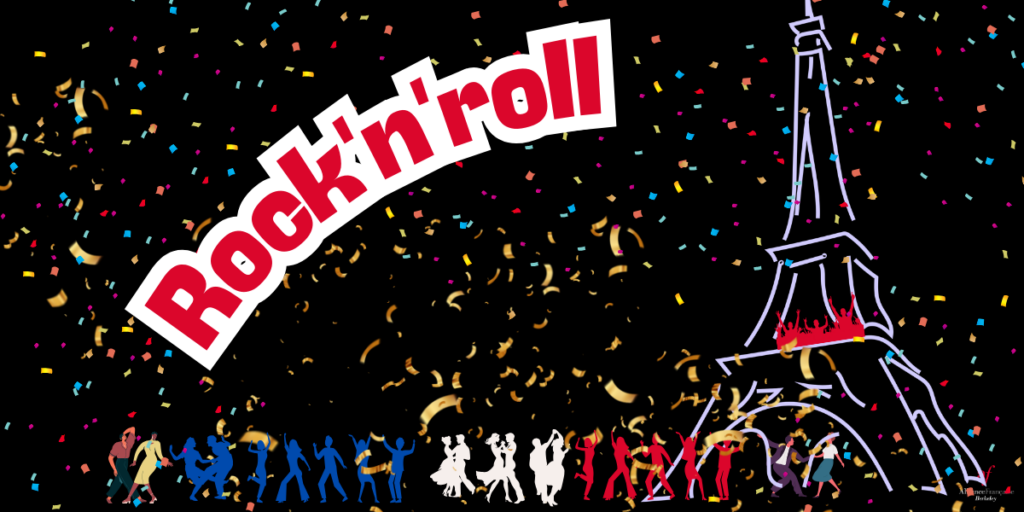Le Rock: The Dance That Keeps France Moving

If you’ve ever been to a party in France, you might have seen people twirling and bouncing to classic rock and roll hits. This lively dance, simply called le rock, became wildly popular in France during the 1980s—and it’s still a favorite at parties today! But where does le rock come from?
A Dance with American Roots
Le rock evolved by borrowing moves from four major American dances: Swing, Lindy Hop, Rock and Roll, and Jive.
While le rock incorporates moves from all four swing styles mentioned above, it does have a distinctive style of its own. It is more upright than crouched, more slot dance than circle dance, and has less emphasis on rhythm and more on arm movements. The main innovation of le rock was to simplify the footwork, making it easy to dance socially without formal dance training.
From Ships to the Dance Floor
The essence of the dance is also captured in its linguistic past. The alliterative phrase "rocking and rolling" originally was used by mariners in the 17th century to describe the combined "rocking" (fore and aft) and "rolling" (side to side) motion of a ship in a storm.
Although the phrase "rocking and rolling" was used initially to describe the unpleasant, unwanted, and dangerous movement of a ship, it was used by the early 20th century, both to describe a spiritual fervor and as a sexual analogy. A perfect description of the exciting French dance le rock. So, when you hit the dance floor for le rock, you’re not just moving to the beat—you’re embodying a centuries-old maritime concept and its newer inspired version.
Hand in hand with Earthquakes
The phrase "rocking and rolling" is also commonly used to describe the ground shaking and seismic waves felt during an earthquake. A "rolling earthquake" refers to the sensation of a gentle, swaying, or undulating ground movement felt during an earthquake, especially at a distance from the epicenter, caused by lower-frequency seismic waves.
In the context of earthquakes and seismic engineering, a "rocking earthquake" or "rocking response" refers to the seismic behavior of a structure, where it moves or sways back and forth during an earthquake, rather than experiencing shear or other types of failure.
So, le rock will be right at home in California, land of earthquakes.
The Perfect Playlist for "Le Rock" Dancing
Looking to practice your moves? Here are some classic rock and roll hits that perfectly match le rock's energetic tempo (120-150 BPM):
- Johnny B. Goode by Chuck Berry
- Great Balls of Fire by Jerry Lee Lewis
- Rock Around the Clock by Bill Haley & His Comets
- Blue Suede Shoes by Elvis Presley
- Whole Lotta Shakin' Goin' On by Jerry Lee Lewis
- Tutti Frutti by Little Richard
- That'll Be the Day by Buddy Holly
- At the Hop by Danny & the Juniors
- Good Golly, Miss Molly by Little Richard
With a mix of quick steps and stylish arm movements, le rock is the perfect way to bring the spirit of rock and roll to any dance floor. So, are you ready to give it a spin? Join us at the AFB Bastille Day Celebration. You’ll find all the details here. Also, if you want to learn more about Bastille Day, please read this article.
